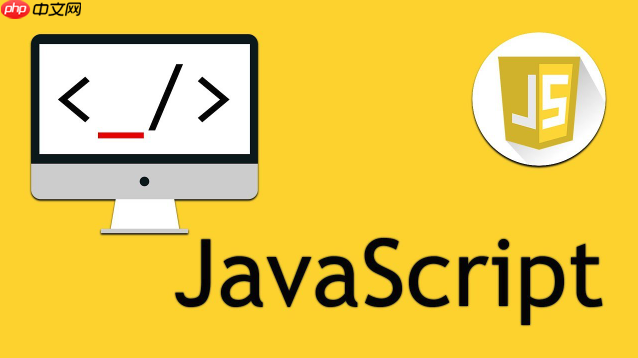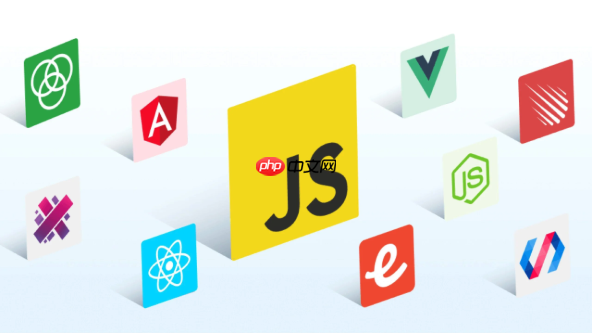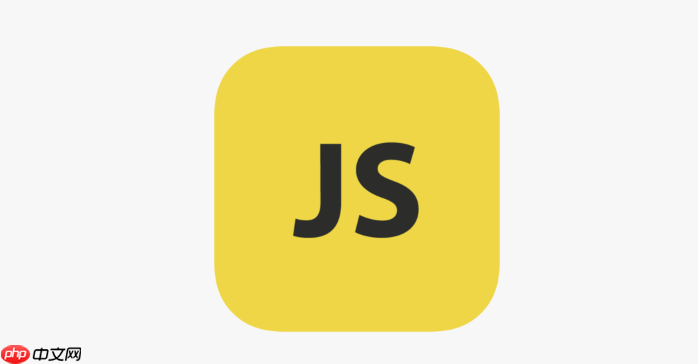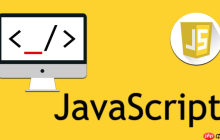利用闭包隐藏状态机内部状态的关键是将状态变量封装在函数内部,仅通过返回的接口暴露有限的操作。1. 闭包通过将状态变量(如currentstate或ison)定义在外部函数内,使其无法被外部直接访问;2. 返回一个包含方法的对象,这些方法可以读取或修改闭包内的状态,但外部无法绕过这些方法直接操作状态;3. 状态转换逻辑被封装在闭包内部函数中,确保状态变化只能通过预定义的接口进行,从而保障状态安全和行为可控;4. 结合状态转换表可提升灵活性,使状态与动作映射清晰且易于扩展;5. 对于异步操作,可在transition方法中使用async/await处理异步逻辑,并在动作完成后更新状态;6. 测试时应验证初始状态、状态转换、动作执行、异步处理及错误响应,确保状态机行为符合预期;该机制有效实现了状态的隔离与可控变更,提升了代码的封装性和可靠性。

JavaScript闭包实现状态机的关键在于利用闭包来封装状态和状态转换逻辑,从而在函数外部无法直接访问和修改状态,保证了状态机的内部状态安全和行为可控。

JavaScript闭包允许函数访问并操作其词法作用域之外的变量。状态机本质上是一组状态和状态之间的转换规则。利用闭包,我们可以将状态机的当前状态和状态转换函数封装在一个函数内部,形成一个闭包。这个闭包返回一个接口,允许外部触发状态转换,但不能直接修改状态。
function createStateMachine(initialState) {
let currentState = initialState;
function transition(newState) {
currentState = newState;
console.log(`State changed to: ${currentState}`);
}
return {
getCurrentState: () => currentState,
transition: transition
};
}
const machine = createStateMachine('idle');
console.log(machine.getCurrentState()); // 输出: idle
machine.transition('running'); // 输出: State changed to: running
console.log(machine.getCurrentState()); // 输出: running
如何利用闭包隐藏状态机的内部状态?
立即学习“Java免费学习笔记(深入)”;

状态机的核心在于状态的隔离和控制。闭包能够有效地将状态变量隐藏在函数内部,防止外部直接访问和修改。这意味着只有通过状态机提供的接口才能改变状态,从而保证了状态机的行为符合预期。
例如,考虑一个简单的灯的状态机,它有“开”、“关”两种状态。

function createLightSwitch() {
let isOn = false;
return {
toggle: function() {
isOn = !isOn;
return isOn ? 'On' : 'Off';
},
isOn: function() { // 暴露一个只读接口,外部可以查询状态,但不能修改
return isOn;
}
};
}
const light = createLightSwitch();
console.log(light.toggle()); // 输出: On
console.log(light.toggle()); // 输出: Off
console.log(light.isOn()); // 输出: false
在这个例子中,isOn变量被闭包保护起来,外部只能通过toggle方法改变状态,或者通过isOn方法读取状态。
状态转换函数如何设计才能更灵活?
状态转换函数的设计直接影响状态机的灵活性和可扩展性。一种常见的做法是使用一个状态转换表,将当前状态和触发事件映射到下一个状态和相应的动作。
function createStateMachineWithTable(initialState, transitionTable) {
let currentState = initialState;
return {
getCurrentState: () => currentState,
transition: (event) => {
const transition = transitionTable[currentState] && transitionTable[currentState][event];
if (transition) {
currentState = transition.nextState;
transition.action && transition.action(); // 执行与状态转换相关的动作
console.log(`State changed to: ${currentState}`);
} else {
console.warn(`Invalid transition from ${currentState} with event ${event}`);
}
}
};
}
// 状态转换表
const lightSwitchTable = {
'off': {
'toggle': { nextState: 'on', action: () => console.log('Turning on the light') }
},
'on': {
'toggle': { nextState: 'off', action: () => console.log('Turning off the light') }
}
};
const lightMachine = createStateMachineWithTable('off', lightSwitchTable);
lightMachine.transition('toggle'); // 输出: Turning on the light, State changed to: on
lightMachine.transition('toggle'); // 输出: Turning off the light, State changed to: off
使用状态转换表可以清晰地定义状态之间的关系,并且易于扩展和修改。每个状态转换可以关联一个动作函数,在状态转换时执行特定的操作。
如何处理状态机的异步操作?
在实际应用中,状态机经常需要处理异步操作,例如网络请求或定时器。这需要在状态转换函数中引入异步逻辑,并且正确处理异步操作的结果。
一种方法是在状态转换函数中使用Promise或async/await来处理异步操作。
function createStateMachineWithAsync(initialState, transitionTable) {
let currentState = initialState;
return {
getCurrentState: () => currentState,
transition: async (event) => { // 使用 async 函数
const transition = transitionTable[currentState] && transitionTable[currentState][event];
if (transition) {
try {
const result = await transition.action(); // 等待异步操作完成
currentState = transition.nextState;
console.log(`State changed to: ${currentState} after async action`);
return result; // 返回异步操作的结果
} catch (error) {
console.error(`Error during async transition: ${error}`);
// 可以选择切换到错误状态或者保持当前状态
}
} else {
console.warn(`Invalid transition from ${currentState} with event ${event}`);
}
}
};
}
const asyncLightSwitchTable = {
'off': {
'toggle': {
nextState: 'pending',
action: () => new Promise(resolve => {
setTimeout(() => {
console.log('Simulating turning on the light asynchronously');
resolve('light_on');
}, 1000);
})
}
},
'pending': {
'resolve': { nextState: 'on' },
'reject': { nextState: 'off' }
},
'on': {
'toggle': {
nextState: 'pending',
action: () => new Promise(resolve => {
setTimeout(() => {
console.log('Simulating turning off the light asynchronously');
resolve('light_off');
}, 1000);
})
}
}
};
const asyncLightMachine = createStateMachineWithAsync('off', asyncLightSwitchTable);
asyncLightMachine.transition('toggle').then(result => {
console.log(`Transition completed with result: ${result}`);
});
在这个例子中,toggle事件触发一个异步操作,模拟打开或关闭灯。transition函数使用async/await来等待异步操作完成,然后切换到下一个状态。需要注意的是,异步操作可能会失败,因此需要进行错误处理。
如何测试使用闭包实现的状态机?
测试状态机需要验证状态转换是否正确,以及状态机的行为是否符合预期。可以使用单元测试框架(例如Jest或Mocha)来编写测试用例。
测试用例应该覆盖以下几个方面:
- 初始状态是否正确。
- 状态转换是否正确。
- 状态转换时的动作是否正确执行。
- 异步操作是否正确处理。
- 错误处理是否正确。
// 示例 Jest 测试
describe('Light Switch State Machine', () => {
it('should start in the off state', () => {
const light = createLightSwitch();
expect(light.isOn()).toBe(false);
});
it('should toggle the light on and off', () => {
const light = createLightSwitch();
expect(light.toggle()).toBe('On');
expect(light.isOn()).toBe(true);
expect(light.toggle()).toBe('Off');
expect(light.isOn()).toBe(false);
});
});
编写清晰、全面的测试用例可以帮助确保状态机的正确性和可靠性。




































暂无评论内容